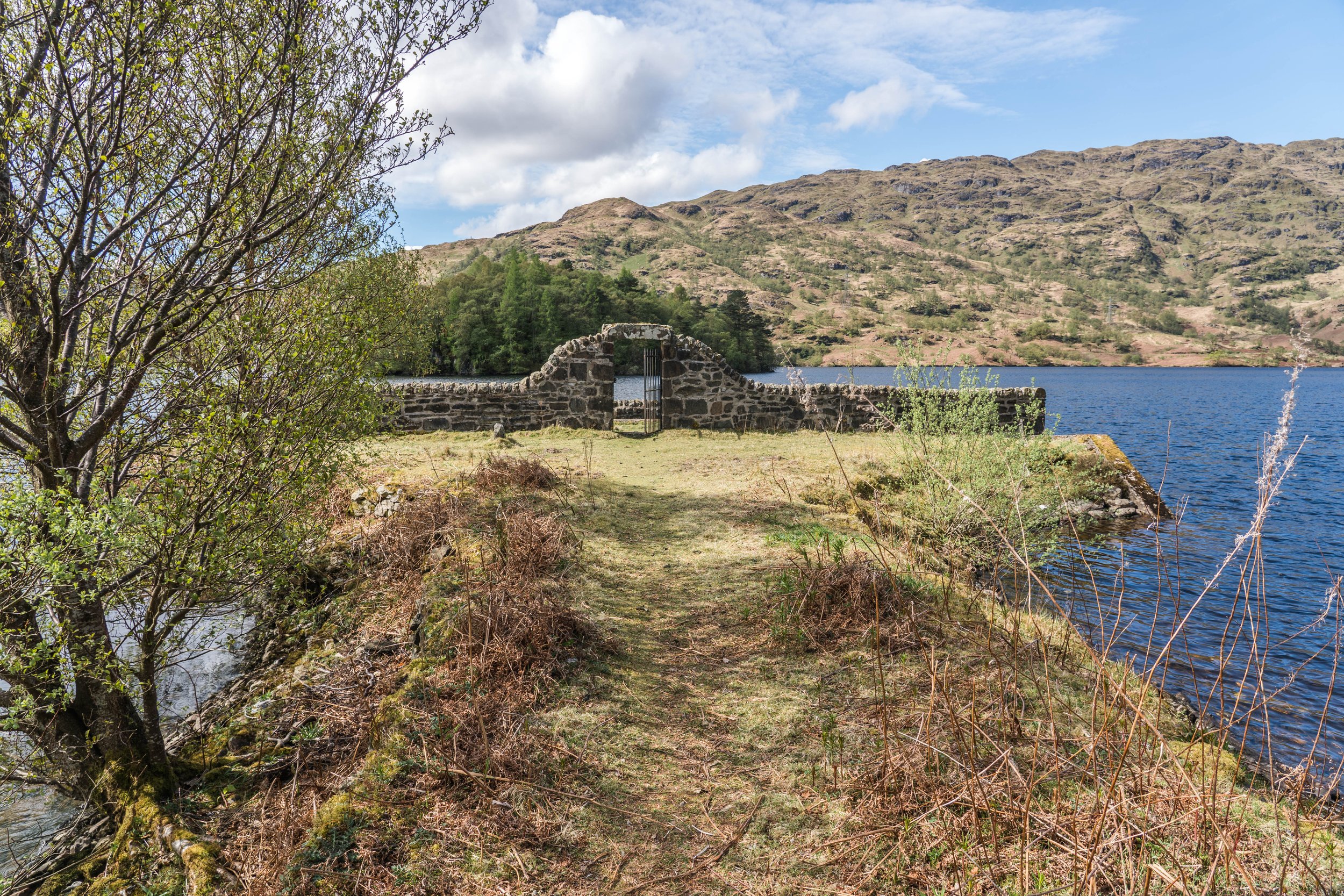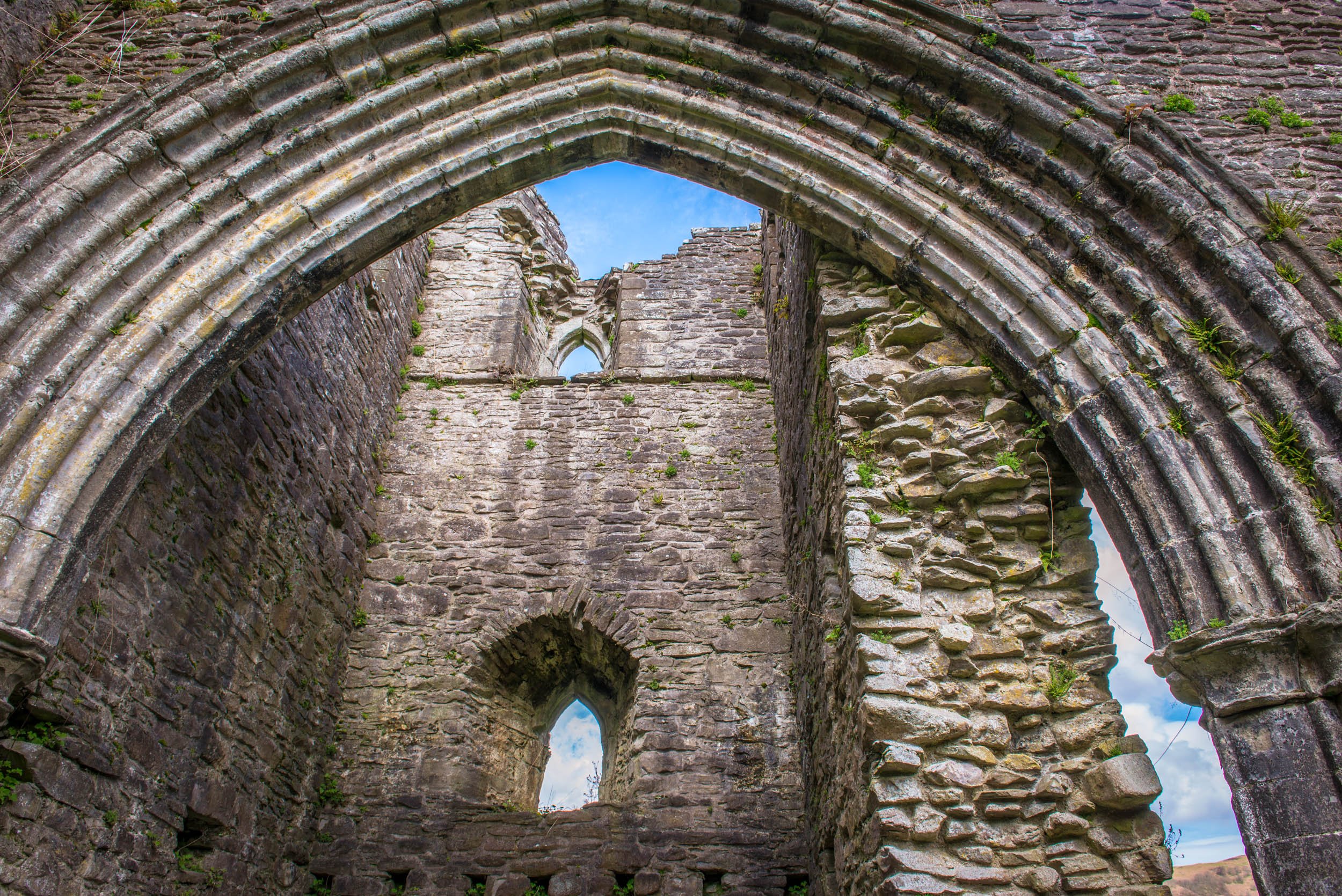
Literary Park
Picture: Clan Gregor's Cemetery, Loch Katrine
Writers visit…
Before the end of the 18th century, Loch Lomond and the Trossachs had been ‘discovered’ by visitors whose tastes were shaped by the new Romantic Movement. It became the fashion to visit and appreciate the wild landscapes that were once foreign, secret and frightening places to Lowlanders, both Scots and English.
Famous travel writers such as Thomas Pennant published accounts of their journeys into the Highlands, fuelling further interest. Even Robert Burns passed this way, during a Scottish tour in 1787. His letters refer to an overnight stay in most convivial surroundings, probably at Arden, as well as to a high-spirited horseback race that ended when Burns fell from his horse. ‘I have lately been rambling over by Dumbarton and Inveraray, and running a drunken race on the side of Loch Lomond with wild Highlandman….’
Most famously amongst the later Romantics, William Wordsworth, with his sister Dorothy, and the poet Samuel Taylor Coleridge, visited Loch Katrine (and many other places besides) in 1803, the first of three trips to Scotland. Poems inspired by the visit include: 'To a Highland Girl' (at Inversnaid); 'Stepping Westward' (along Loch Katrine); 'The Solitary Reaper' (at Balquhidder); 'Rob Roy's Grave' (by Loch Katrine – a famous error by Wordsworth as Rob Roy is really buried at Balquhidder!).
The growing popularity of the area was assured with the publication of a literary ‘blockbuster’ – Sir Walter Scott’s 'The Lady of the Lake' - in 1810. Its format as a ‘verse-narrative’ is certainly not in vogue today but it helped promote the image of a Highland Scotland as a place of unspoilt and romantic wildness once the stronghold of the Highland clans. The Trossachs became fixed firmly on the visitor map also because Scott set the story into the landscape - with identifiable features all around, including hills like Ben Ledi and Ben Venue, and features around Loch Katrine such as Ellen’s Isle and Coire na Uriusgean, ' the Goblins' Cave’ (in reality, poetic licence for a rocky hollow on Ben Venue where the Macgregors formerly hid their stolen cattle).
The popularity of Loch Lomond and The Trossachs increased throughout the 19th century with improved transport, especially the new-fangled railways and steamers. Small wonder that, along with crowds, a whole range of literary figures made their way there: Charles Dickens in 1841, George Eliot in 1845, Hans Christian Anderson in 1847 and many more – and Jules Verne (visiting in 1859) was even inspired later to write a very curious Highland novel about a group of miners founding a settlement under Loch Katrine! (It was re-published in translation as ‘The Underground City’ in 2005.)
Poets, too, came to be inspired. Gerard Manley Hopkins was a brilliant scholar who became a priest. He worked in several parts of the country, including Glasgow in 1881. Around this time he probably visited Loch Lomond and saw the foaming burn that falls steeply from the ‘hanging valley’ of Glen Arklet to reach Loch Lomond at Inversnaid. This became the name of his famous poem containing the well-known lines – the very watch-word of the conservation movement -
‘What would the world be, once bereft
Of wet and of wildness ?
Let them be left,
O let them be left, wildness and wet ;
Long live the weeds and the wilderness yet.’
For further information on Loch Lomond literary connections, great and small, see this blog by Louis Stott.

